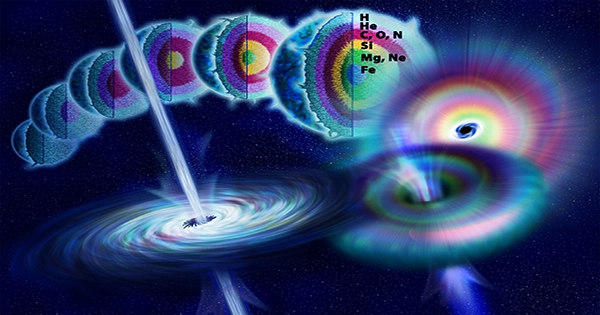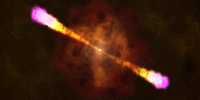A pulsar — a dead star the size of a city – has been discovered emitting a massive beam of particles and antiparticles that is around 7 light-years long and 68 trillion kilometers wide (42 trillion miles). The material filament was originally spotted in 2020 by NASA’s Chandra X-ray telescope, but its actual size was just recently found. Martijn de Vries and Roger Romani of Stanford University describe how the beam is rich in positrons, the antimatter analogue of electrons, in a manuscript approved for publication in The Astrophysical Journal. Pulsar PSR J2030+4415, like other neutron stars, is around 16 kilometers (10 miles) in diameter, yet it may produce a massive stream of particles because to its enormous magnetic field.
“It’s incredible that a pulsar about 10 miles across can build a structure so large that we can see it from thousands of light-years distant,” said lead author de Vries in a statement. “If the filament stretched from New York to Los Angeles at the same relative size, the pulsar would be around 100 times smaller than the tiniest object visible to the human eye.” Pulsars are fascinating things. When stars of a particular size explode as supernovas, their cores collapse into neutron stars, which are very dense objects. The mass of a teaspoon of neutron star material is billions of tons, equivalent to the mass of a mountain. Pulsars, on the other hand, are neutron stars that rotate fast and pulse.
Extreme magnetic fields in pulsars may accelerate particles to high speeds and produce high-energy radiation, which can split electrons and positrons into pairs. This is due to Einstein’s famous E = mc2 equation. Matter may transform into energy and vice versa. As a result, when matter and antimatter collide, they annihilate and transform into pure energy. High-energy releases can produce both matter and antimatter particles. Normally, the pulsar’s tremendous magnetic fields keep those particles bound, but they are escaping here. This, the researchers assume, is owing to the pulsar’s rapid movement across the interstellar medium. This resulted in a charged particle bow shock.
The pulsar caught up to the bow shock during the previous several decades as the latter slowed down, and the pulsar’s magnetic field matched with that of the interstellar medium. “This most likely resulted in a particle leak,” Romani said. “The magnetic field of the pulsar wind joined up with the magnetic field of the interstellar medium, and high-energy electrons and positrons squirted out via a nozzle produced by the connection.” Particles continue to remain energetic enough to emit X-rays in their accelerated movements, which Chandra was able to detect. Such occurrences could be the source of cosmic antimatter.















